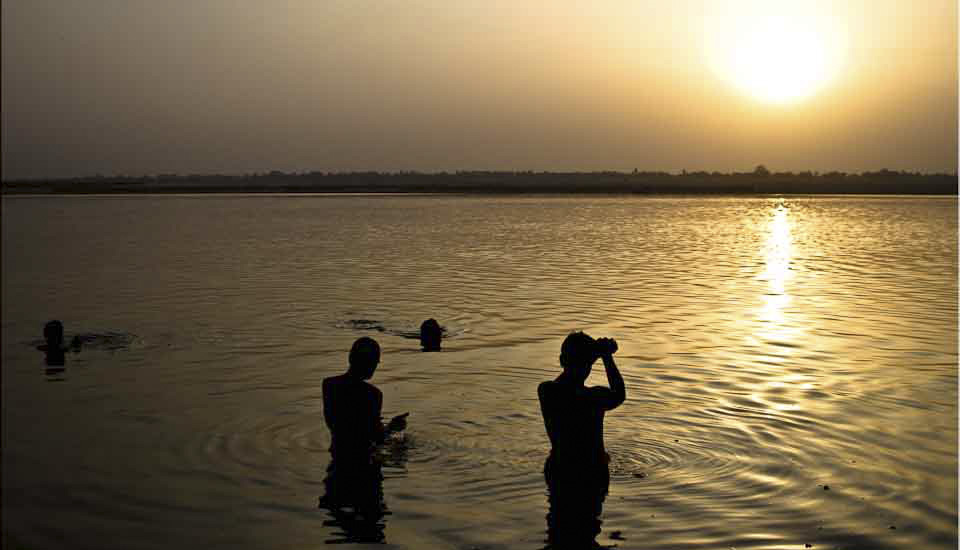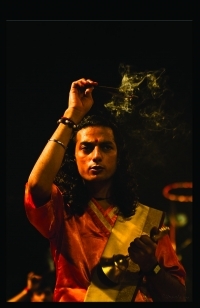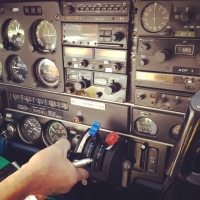.jpg)
Mindima Firemaking Group
The tribes of the Papuan New Guinea Highlands are a diverse lot – with numerous different languages and cultural expressions.
Papua New Guinea is a remote and rugged country that was untouched by foreign influences for a very long time. Its jungle-clad mountains and wild river valleys are home to one of the most culturally and linguistically diverse populations in the world. For a long time, outsiders thought the Highlands region was unpopulated, and international missionaries, mining interests, and anthropologists made almost no inroads into the interior until well into the 20th century.
Almost 40% of Papua New Guinea’s 7 million people (July 2020 est.) live below the poverty line. Although agriculture still provides a subsistence livelihood for 75% of the population, it is considered to be one of the poorest countries in the Asia Pacific region. Nearly two-thirds of the county’s export earnings come from mineral deposits developed since the 1970s, but the resultant economic boom has not trickled down into local communities.
So, the growing tourism and hospitality sector provides some hope for distinctive tribal communities who want to preserve their cultural heritage into the future while gaining access to economic boons.
Sing sings, gatherings of neighbouring Papua New Guinean tribes or villages to share their distinct culture, dance, and music, have long been a feature in the country, and have resulted in a welcome mitigation of traditional inter-tribal warfare. In recent years, these festivals have been more actively marketed to tourists, contributing to local income and an ongoing pride in culture and heritage.
But, this is not without its own difficulties: some of the more distinctive and popular groups are, in effect, fighting a “trademark” battle over their own traditional costumes. The image of the Asaro mudmen from the Eastern Highlands Province, for example, has often been used in advertising and popular culture without the consent of the originating community. And, much to the dismay of Asaro families, in the neighbouring Simbu (Chimbu) Province, mudmen designed there have been incorporated into local tourist demonstrations (see: The Asaro Mudmen: Local Property, Public Culture?). The Chimbu, or Simbu, are credited with originating the zombie-like skeleton men (see: Skeleton Men) – but these unique creations have also migrated outside the region of their origins, and taken on new forms.
For the outsider, it is a minefield! Some tourism operators do warn that, with the lure of money, some groups might perform ceremonies “not traditional to their tribal group or … [not] at the traditional time of year.” But, even with responsible operators, visitors can get caught up in local disputes. I have personally been contacted by someone who said the mudmen whose photos I shared previously (see: Asaro Mudmen), were not entitled to the representation; I referred him back to my local contact, as I’m in no position to judge!
In spite of the Highlands being a field-study goldmine for burgeoning anthropologists all through the 20th century (including for one of my favourite tutors back at university), I have found getting any in-depth information on-line about individual tribes difficult. (I found one lengthy and not particularly helpful monograph written by a Lutheran minister who lived and worked in Simbu Province for 40-odd years – but little else.) Even when I have looked up the sing sing group names as written on the cardboard signboards, I have found little or no information. Plenty of poorly-captioned pictures exist, and tourist-operator blurbs saying: “Little is known about …”, referring to this tribe or that. Different variations of custom-origin stories get cut-and-pasted from one site to the next, but with the dearth of substantial information, it is no surprise that cultural appropriation takes place in a land where open tribal warfare still exists.
So, although I was at the Mount Hagen Cultural Show, one of Papua New Guinea’s most popular cultural events, with photographer Karl Grobl from Jim Cline Photo Tours, and with the guidance of a well-credentialed local operator, I can’t speak to the bonafides of the tribal people I met and photographed. Nor can I tell you much about the “why” of most of their particular customs and festival attire.
I can, however, share a wonderful glimpse into a unique tribal world of fiercely guarded, proud traditions.
Join me!
.jpg)
Skeleton in the Smoke
Outside the Kagamuga Showgrounds, Chimbu people from Simbu Province get ready for their parts as skeletons and fire-makers.
.jpg)
Simbu/Chimbu Woman
It is not uncommon for women to have small facial tattoos, and to wear their net bilum bags on their heads; …

Simbu Woman
… it is also not uncommon to see warm smiles, stained by the ubiquitous betel nut.

Painting the Skeleton
I have shared a story of the origins of skeleton-men and pictures of their preparation before (see: Bugamo Skeleton Men).

Man Painting a Young Skeleton
Body-painting for the sing sing takes a lot of time and patience.

Skeleton Skull
I loved watching the quiet stoicism displayed by the youngsters …

Eyes of the Skeleton
… as they submitted to the long task of sing sing preparation.

Painting Skeleton Hands

Skeleton Boy
Everyone is at a different stage of readiness.

Skeleton Preparations
I saw no female skeletons – and I don’t believe they exist – but I did see women assisting with the painting.

Mindima Firemakers
This man, from the same group, tried to explain to me the relationship between the skeletons and the fire-makers, but my tok pisin was not up to understanding his story. I did get the part where he explained how careful one had to be with the fire-pot-headdress, so as not to burn oneself!

Mindima Firemaker
The evidence of a lifetime of betel-nut chewing is everywhere; …

Betel-Nut Sellers
… betel nuts, seeds of the areca palm, are also everywhere. This man was hoping I’d have a cigarette for him! Tobacco is as popular as betel chew.

Police Special Services Division
As the competing tribes get ready for the festival, the police presence is conspicuous and well armed – but friendly.

Crafting a Mud Mask
In another quadrant of the paddock, a man fashions a ferocious mud mask.

Mud Mask
Although there are various explanations for the origins of these frightening – but hot and cumbersome – headdresses, the most convincing one relates to the pre-colonial custom of disguising oneself when conducting raids against neighbouring tribes to prevent being recognised and thus making retaliation impossible.

Little Mudmen
Today, small versions are made to be sold as souvenirs.

Model Masks
Like the real masks – which are often embedded with boars’ teeth – the grotesque models show a lot of variety.

Final Preparations
Once their bodies are coated in mud and their masks are on, the men are ready to head to the parade ground – …

Asaro Mud Men
… – pausing briefly to have their pictures taken.

Omo Masalai from Simbu
Looking like something from The Walking Dead, and followed by some sort of fur-covered demon, members of one group march toward the fair grounds.

Omo Masala Skeletons
Skeletons follow closely behind.

Mindima Firemaking
In contrast with the skeletons, the firemakers feature stripes instead of bones, making me think of men in old-fashioned prison garb.

Nursing the Flames
The next day I went back to the same area to see if I could get a better explanation of the Mindima firemaking.

Concentration
I found no one to speak with: these people are among the 120,000 native-Kuman speakers, and may or may not have Tok Pisin as a second language. English is well down the list!

Mindima Child Making Fire
So, I cannot tell you why these people transport fire on their heads.

Skeletons in the Grass
Meanwhile, another group of skeleton men are ready to take their place on the parade grounds, …

Skeletons on the Warpath
… where, rather than being zombie-like, …

Skeletons on the Attack
… they leap around in a menacing manner.
It is easy to see how these warring tribes were able to intimidate each other in the past.

At least today it is mostly in good humour and for show.
Until next time,
Safe Travels!
Pictures: 19-20August2017
































.jpg)

